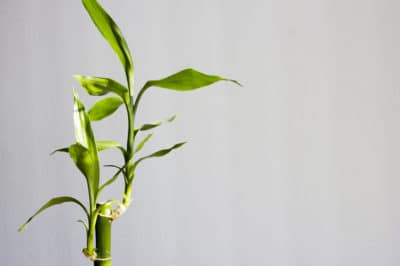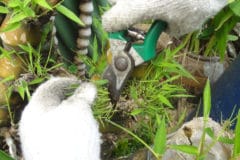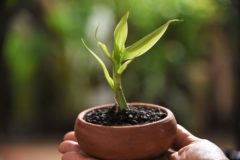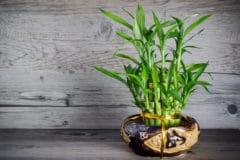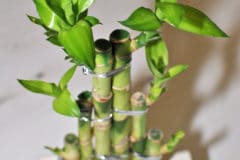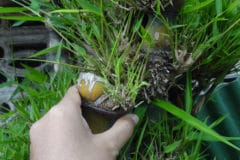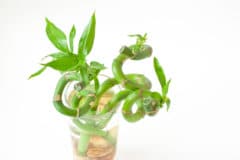Lucky Bamboo Structure
Like true bamboo, lucky bamboo – which is actually Draceana sanderiana – has jointed stems. True bamboo has hollow stems, while lucky bamboo has solid stems. The junction between stems is called a node. Leaves arise from the nodes. Most lucky bamboos are sold with leaves on the lower stems cut off to enhance the bamboo-like appearance.
Tools for Trimming Lucky Bamboo
Assemble your tools prior to beginning the task. Depending on whether you are just trimming or making cuttings to start new plants, you may need:
- A clean, sharp knife.
- A pair of clean, sharp pruning shears.
• Misting bottle. - Rainwater, filtered or distilled water.
- Container(s) for cuttings.
- Rooting hormone.
Topping Lucky Bamboo
Topping is cutting off the top of a plant. This stimulates the lower part of the plant to produce new leaves and stems. The cut part of the stem will not regrow, but the plant will send up a new stem below the cut. Make topping cuts only after closely evaluating how the plant will look, as you can’t fix a mistake.
Trimming Leaves
A lucky bamboo that has been exposed to too much sunlight may develop dry leaf edges. While your first thought might be to trim back the damaged area, it’s not a good idea. The leaf won’t regrow, and cutting adds insult to injury – you may be setting the plant up for an infection. Trim the whole leaf back at the base instead.
Trimming Lucky Bamboo Stems
You can trim just to shape your plant or use trimmings to start new plants – it roots readily. In either case, select a node at the height you’ve chosen for the trimmed stem. Use the knife to make a clean, horizontal cut one inch above the node. For a cutting, place the bottom of the trimmed piece into rooting hormone. Let dry overnight; place in water or plant.
Trimming Roots
In addition to trimming the top growth on your lucky bamboo, there may be times when you need to trim the roots. When you first bring a plant home, the roots may not look healthy – brown or yellow roots should be trimmed. Use a sharp knife, clippers or scissors to cut off discolored roots until only white shoots are left. Change the water, as it may be contaminated.
